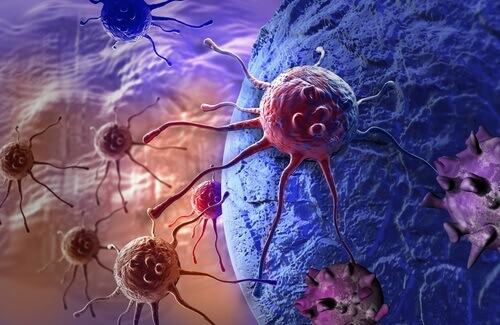If you needed one more reason why exercise is important to your health, you have it now. A new study shows that exercise can help reduce your cancer risk for 13 types of cancer. Researchers have known for many years that exercise can help to reduce the risk of three forms of cancer that account for nearly one in four cancers in the US: colon, breast, and endometrial cancers. The new research shows a significant risk reduction for 10 other types of cancer, as well. Here’s more about the study:
A new study of the relationship between physical activity and cancer has shown that greater levels of leisure-time physical activity were associated with a lower risk of developing 13 different types of cancer. The risk of developing seven cancer types was 20 percent (or more) lower among the most active participants (90th percentile of activity) as compared with the least active participants (10th percentile of activity). These findings, from researchers at the National Cancer Institute (NCI), part of the National Institutes of Health, and the American Cancer Society, confirm and extend the evidence for a benefit of physical activity on cancer risk and support its role as a key component of population-wide cancer prevention and control efforts. The study, by Steven C. Moore, Ph.D., NCI, and colleagues, appeared May 16, 2016, in JAMA Internal Medicine.
Cancers with greatest rates of reductions in study
- Colon cancer
- Breast cancer
- Endometrial cancer
- Esophageal adenocarcinoma
- Liver cancer
- Cancer of the gastric cardia
- Kidney cancer
Cancers also showing reduced risk, but not as strong:
- Myeloid leukemia
- Myeloma
- Cancers of the head and neck
- Rectal cancer
- Bladder cancer
- Lung cancer (for current and former smokers)
Researchers also noted that ” … results support that these associations are broadly generalizable to different populations, including people who are overweight or obese, or those with a history of smoking.”
In addition to this study, we’ve also previously talked about a study showing that physical activity may slow aging – – and the more the better.
How much physical activity do you need to reduce cancer risk?
How much activity do you need to ensure reduced risk? The report indicates that the median level of activity in the study was about 150 minutes of moderate-intensity activity per week. That’s right in line with the CDC guidelines: How much physical activity do adults need?
The CDC offers examples of moderate aerobic and vigorous aerobic exercises:
How do you know if you’re doing light, moderate, or vigorous intensity aerobic activities?
For most people, light daily activities such as shopping, cooking, or doing the laundry doesn’t count toward the guidelines. Why? Your body isn’t working hard enough to get your heart rate up.
Moderate-intensity aerobic activity means you’re working hard enough to raise your heart rate and break a sweat. One way to tell is that you’ll be able to talk, but not sing the words to your favorite song. Here are some examples of activities that require moderate effort:
- Walking fast
- Doing water aerobics
- Riding a bike on level ground or with few hills
- Playing doubles tennis
- Pushing a lawn mower
Vigorous-intensity aerobic activity means you’re breathing hard and fast, and your heart rate has gone up quite a bit. If you’re working at this level, you won’t be able to say more than a few words without pausing for a breath. Here are some examples of activities that require vigorous effort:
- Jogging or running
- Swimming laps
- Riding a bike fast or on hills
- Playing singles tennis
- Playing basketball
You can do moderate- or vigorous-intensity aerobic activity, or a mix of the two each week. A rule of thumb is that 1 minute of vigorous-intensity activity is about the same as 2 minutes of moderate-intensity activity.

